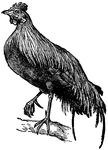
Jungle-fowl
Jungle-fowl is a general name given to the members of the genus Gallus. The red jungle-fowl, G. jerrugineus,…

Eddy Tailless Kite
The Eddy Tailless Kite (named so after its inventor, Eddy of Bayonne), is a tailless kite. The convex…
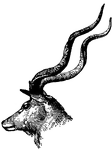
Head of Kudu
This illustration shows the head of a kudu. A kudu is a large African antelope related to the eland,…

Langur
A langur is a monkey of the genus Semnopithicus, which contains Asiatic forms characterized by slender…

Lemming
A lemming is a small, yellowish-brown rodent, closely related to the vole, and belonging to the genus…
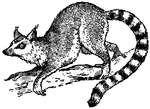
Ring-tailed Lemur
A familiar example of the true lemur, the Ring-Tailed Lemur (Lemur catta) , or 'Madagascar cat', is…

Leopard
The leopard (Felis pardus) is a carnivore closely allied to the lion and the tiger, but differing it…

Crag and Tail
Crag and tail, a term used to designate a peculiar hill conformation. a, crag; b, tail (boulder clay,…
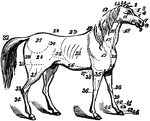
Horse
The anatomy of a horse. 1, ears; 2, forelock; 3, forehead; 4, eyes; 5, eye-pits; 6, nose; 7, nostril;…
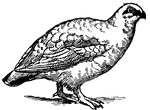
Rock Ptarmigan Winter Plumage
The winter plumage of a Ptarmigan, a grouse of the genus Lagopus. Usually a light reddish brown tint,…

Pug Dog
The pug is a breed of small, short-haired lap dogs, probably of Oriental origin, and introduced into…

Puma
The puma, also known as the cougar, panther, or mountain lion (Felis concolor) , is a large American…

Anglo-Saxon Ships with Wind in the Sails
A fleet of three ancient Anglo-Saxon ships, each with wind filling the lone sail. Each ship has a dragon…
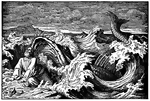
Jonah is Swallowed by a Great Fish Sent by God
"And Jehovah prepared a great fish to swallow up Jonah; and Jonah was in the belly of the fish three…

The Scorpio Constellation, with Libra
"The constellation which is prominent in early summer in the skies of the southern United States (where…
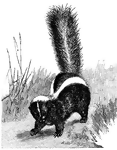
Common Skunk
"A fetid animal of the American genus Mephitis, M. mephitica... The animal inhabits all of temperate…
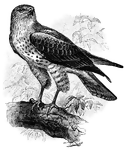
Snake Buzzard, Also Called a Short-Toed Eagle
Circaetus gallicus is a "bird of prey inhabiting all the countries bordering the Mediterranean, and…
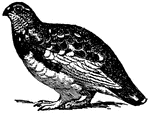
Rock Ptarmigan Summer Plumage
The winter plumage of a Ptarmigan, a grouse of the genus Lagopus. Usually a light reddish brown tint,…
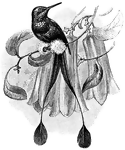
Racket-Tailed Hummingbird
Spathura underwoodi. The Spathura is a "remarkable genus of Trochilidae, containing hummingbirds with…

Spottail Minnow or Shiner
Notropis hudsonius. The spottail minnow, also called the spottail shiner is a spawn-eater. These fish…
Human Spermatozoa
"One of the numberless microscopic bodies contained in semen, to which the seminal fluid owes its vitality,…
Spermatozoa of an Ape
"One of the numberless microscopic bodies contained in semen, to which the seminal fluid owes its vitality,…

Kokla Green Pigeon
Sphenocercus sphenurus. The Kokla Green Pigeon, also called a Wedge-tailed Pigeon, "a genus of fruit…
